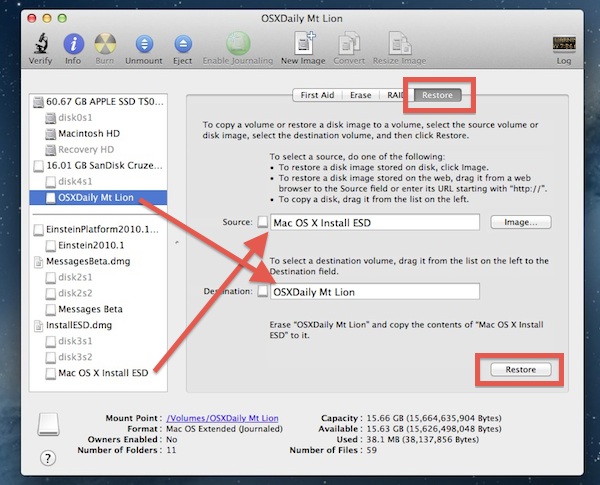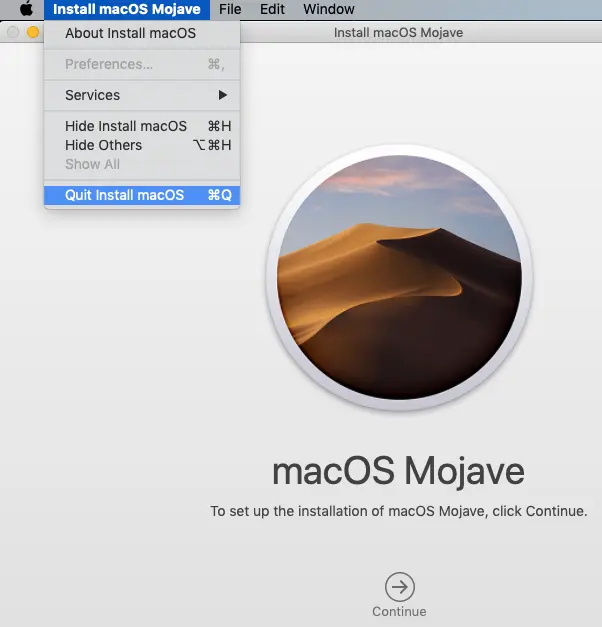- See Full List On Macfixz.com
- 10.5: Avoid 'resource Busy' Errors In Disk ... - Mac OS X Hints
- 'Restore Failure - Tinyapps
- Restore Dmg Could Not Validate Source Codes
- 'Could Not Validate Source' Error While Burning Iso File To ...
Restore DMG to SD Card - MAC OS X: After making a backup of a SD Card, and trying to restore it using 'Disk Utility' you may have some issues during the process like:Error: Could not validate source - Invalid argumentTo solve this, there is this 3 step process that you can perform in. Restore Dmg Could Not Validate Source Payday 2 Lmg Acc Or Dmg Mac Os X 10.5 Retail Dmg Download Outlaw Top Raid Dmg Build Dmg 5 Axis Cnc Machine Dmg Network Vs Dmg Local Aja System Test Lite Dmg How To Burn Dmg To Bootable Dvd In Windows.
tinyapps.org / blog
 Could not validate source - Operation not supported' kept appearing in Disk Utility as I tried unsuccessfully to restore a bootable USB flash drive image to a new USB flash drive. The asr workaround did not work either, returning Source volume format on device '/dev/disk3' is not valid for restoring. Could not validate source - error 254.
Could not validate source - Operation not supported' kept appearing in Disk Utility as I tried unsuccessfully to restore a bootable USB flash drive image to a new USB flash drive. The asr workaround did not work either, returning Source volume format on device '/dev/disk3' is not valid for restoring. Could not validate source - error 254.See Full List On Macfixz.com

By happy chance, I stumbled onto Max's answer which credited drgeoff's reply, which linked to PureDarwin's Disk images page. The secret was to convert the image format to raw before writing with dd (attempting to restore even the converted image via Disk Utility returned the same 'Restore Failure' error above).
Here is the process I used to backup my DiskWarrior bootable USB flash drive and restore it to a new flash drive:
Backup
- Insert USB flash drive to be imaged
- Open Disk Utility
- Click root of USB flash drive
- Click 'New Image'
- Select desired Image Format (tested restore of 'read-only' and 'compressed (bzip2)' images successfully)
- Save image to desired location
Restore
- $ hdiutil convert /path/to/image_created_above.dmg -format UDTO -o new_image.img
- Remove the .cdr extension that hdiutil automatically appended to new_image.img
- Run Disk Arbitrator and set to 'Block Mounts'
- Plug in new USB flash drive (WARNING: all contents will be erased) and note the assigned device name in Disk Arbitrator's Disks Window (e.g., diskx)
- $ sudo dd if=/path/to/new_image.img of=/dev/rdiskx bs=8192
(Pipe through pv or use a dd alternative like dcfldd to easily track progress.)

10.5: Avoid 'resource Busy' Errors In Disk ... - Mac OS X Hints
In retrospect, it might've been better to avoid Disk Utility altogether and simply use dd to create the image:
$ sudo dd if=/dev/rdiskx | bzip2 -9f > usb_image.bz2
obviating the need to convert with hdiutil before restoring:
$ bzip2 -dc usb_image.bz2 | sudo dd of=/dev/rdiskx
UPDATE: It appears that dd/bzip2 creates a more faithful image than Disk Utility's compressed (bzip2) format does:
- The image created using dd and bzip2 was 810.7MB vs. 626.6MB for the compressed (bzip2) image created by Disk Utility.
- The MD5 checksum of the USB flash drive differed based on which image file was restored to it, so the difference in file sizes was not merely some difference in the compression algorithm (which should have been the same anyway).
- When the dd-created image was restored and the USB flash drive plugged in, it mimicked the original DiskWarrior flash drive's behavior (only the /Volumes/DW Finder window automatically opened).
- When the Disk Utility-created image was restored and the USB flash drive plugged in, Finder windows automatically opened for both /Volumes/DW and /Volumes/DiskWarrior Recovery (unlike the original DiskWarrior flash drive).
For Disk Utility to achieve similar results as dd/bzip2, one would need to select 'entire device' as the Image Format and then compress the image afterwards in Terminal: $ bzip2 -9f usb_image.dmg > compressed_usb_image.bz2. And, before restoring the image, it would need to first be converted with hdiutil as shown above. Back to dd for imaging disks!
'Restore Failure - Tinyapps
/mac | Mar 19, 2015
Subscribe or visit the archives.
Restore Dmg Could Not Validate Source Codes
I ran into an interesting macOS error while working with a customer. I didn't find a lot of good search results addressing the issue, so I decided to write up a post about it myself.
'Could Not Validate Source' Error While Burning Iso File To ...

The error was as the screenshot above shows; trying to open a dmg (disk image), macOS showed the error 'no mountable file systems'. If you see the 'no mountable file systems error' while opening a dmg, here's what you should try:
In most cases, the downloaded dmg file is actually corrupt or had an error downloading. If possible, try downloading the dmg again, turning off any download assistant plug-ins you may have. You can try downloading the file in a different browser as well. Or if you don't need to be logged in to the site to download the file and you want to be fancy, you can try
curl -O urlin Terminal to download the file. (There's an example of that in my screenshot below.)Reboot your Mac if you haven't already tried that. Apparently there is an issue sometimes after opening too many dmg files, that is fixed with a reboot.
Try mounting the DMG on the command line in Terminal. We will at least get some sort of useful error message to go on if it still fails:
Open Terminal: In Spotlight, the search magnifying glass at the upper right corner of your screen, search for Terminal, and press enter to open the Terminal app.
Type
hdiutil attach -verboseinto the terminal. Add a space at the end, but don't press enter yet.Drag the dmg file from your Finder window onto the Terminal window and let go. This will fill in the location of the dmg file into your Terminal window.
- Press enter.
macOS Sierra (10.12) and earlier is not able to mount the new Apple File System (APFS). So if you're on macOS Sierra (10.12) or earlier and you ran hdiutil and see references to
Apple_APFSor error112, the issue is likely legitimate incompatibility, and this disk image won't open on this Mac without an update to the operating system.Here's an example of the end of
hdiutil attach -verboseoutput that shows an APFS error due to an older version of macOS:Think about if you have any kind of security policies on this machine to prevent writing to external drives (thumb drives, optical drives, etc). I haven't seen this one in action, but I read about this being a possibility while researching the issue.
Another suggestion added by a reader (thank you, Markus!) is that filesystem errors on your main Mac drive could be the cause of the disk image mounting errors. Here are instructions from Apple for scanning and repairing errors using Disk Utility. Note that in order to scan and repair errors on your main Macintosh HD drive, you'll need to reboot your Mac into recovery mode. You'll want to choose Disk Utility in the utilities listed in the recovery mode menu.
A new discovery from a reader (thank you, Colby!) is that APFS DMGs won't mount if you're booted in macOS booted in Safe Mode. (Who knew!?!) If you're not sure if you're in safe mode, select the Apple menu > About This Mac > System Report button, then select the 'Software' heading from the left column. To exit safe mode, restart your Mac, without holding Shift during startup. Or, if you previously set your Mac to always boot into safe mode using
nvram, turn off safe mode and have your Mac boot normally on the terminal:Open Terminal: In Spotlight, the search magnifying glass at the upper right corner of your screen, search for Terminal, and press enter to open the Terminal app.
Type/paste
sudo nvram boot-args='and press enter.Restart your Mac.
Another new discovery (thank you, Iris!) is that if you have APFS by Paragon software installed on a Mac that can read APFS itself, it can interfere with opening the DMG. So if you used APFS by Paragon and then updated your Mac, you may need to uninstall it.
One footnote for people having issues opening ISO files. Another new discovery is that 'hybrid' ISO files (think Linux installers) don't open correctly automatically and need to be manually attached and mounted (this is NOT advice for normal .dmg files.) Credit to the this superuser.com discussion and this Apple forum discussion for solutions.